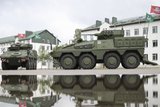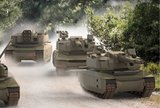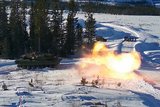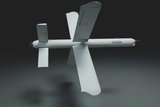US Army orders fifth JLTV batch
Oshkosh Defense will deliver additional Joint Light Tactical Vehicles (JLTV) to the US Army under an order announced on 1 August.
The order, valued at more than $195 million, includes 748 vehicles and 2,359 installed and packaged kits.
This is the fifth order for the JLTV programme since the contract was awarded in August 2015.
The JLTV programme is currently in low rate initial production with testing and evaluations being conducted. The programme anticipates a full rate production decision in fiscal year 2019. The first army unit is expected to be equipped with the vehicle by the middle of that year. The vehicles are expected receive both US Army and Marine Corps Initial Operating Capability in early 2020.
Dave Diersen, VP and general manager of joint programs, Oshkosh Defense, said: ‘Soldiers and marines need a reliable, transportable and protected mobility solution that balances payload, protection, and performance. The Oshkosh JLTV is that solution.’
Related Equipment in Defence Insight
More from Land Warfare
-
![Hungary set to begin using Hero 400 loitering munitions]()
Hungary set to begin using Hero 400 loitering munitions
Developed by Israel's Uvision and with systems being sold in the thousands to multiple European NATO countries and the US, the Hero family of loitering systems is also in production in the US and Italy, the latter through Rheinmetall.
-
![Croatia orders Leopards and CAESAR howitzers as Lithuania orders more CAESARs]()
Croatia orders Leopards and CAESAR howitzers as Lithuania orders more CAESARs
The Leopard is becoming the tank of choice in central and eastern Europe as Croatia joins Lithuania, the Czech Republic and Hungary in ordering the platform. Lithuania and Croatia have also signed for CAESAR howitzers.
-
![Light Reconnaissance Strike – enabling a vital mission set (Studio)]()
Light Reconnaissance Strike – enabling a vital mission set (Studio)
A new system-of-systems concept will unlock digital integration of sensors and weapons for Light Forces, allowing them to shape the battlefield environment on their own terms and upgrade legacy platforms.
























